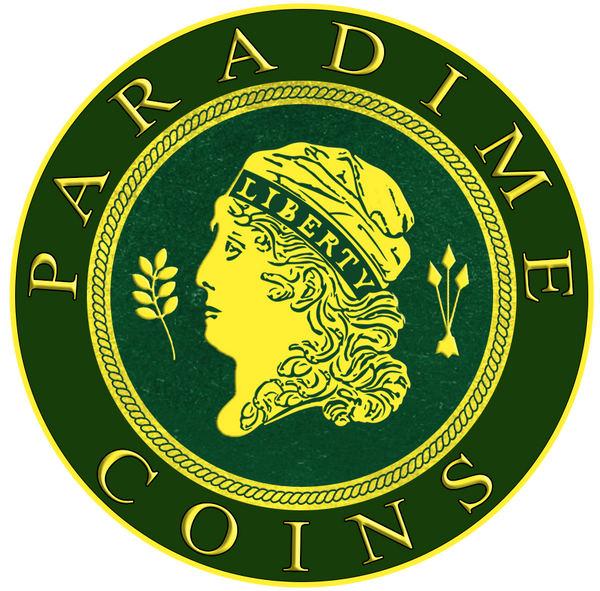Collection: Draped Bust Dime (1796 - 1807)
No products found
View All Inventory
Draped Bust Dimes: A Legacy in Early American Coinage (1796–1807)
The Draped Bust Dime, introduced in 1796, represents the early ingenuity and artistry of U.S. coinage. Designed by Robert Scot, this series spanned two distinct reverse designs, capturing the evolution of American coinage during its infancy.
Key Specifications
- ... Read More
Draped Bust Dimes: A Legacy in Early American Coinage (1796–1807)
The Draped Bust Dime, introduced in 1796, represents the early ingenuity and artistry of U.S. coinage. Designed by Robert Scot, this series spanned two distinct reverse designs, capturing the evolution of American coinage during its infancy.
Key Specifications
- Designer: Robert Scot
- Issue Dates: 1796–1807
- Composition: 89.24% silver, 10.76% copper
- Diameter: 19 mm
- Weight: 2.69 grams (41.51 grains)
- Edge: Reeded
Design and Variants
Type 1: Draped Bust with Small Eagle Reverse (1796–1797)
- Obverse: Miss Liberty with flowing hair, surrounded by stars (13 in 1796; 13 or 16 in 1797) and the date below.
- Reverse: A small eagle perched on a cloud, enclosed by a wreath with UNITED STATES OF AMERICA around the rim.
- Mintages: 47,396
- Collectibility: Most examples are found in lower grades, such as Fine or below. High-grade pieces, particularly AU or Uncirculated coins, are exceedingly rare.
Type 2: Draped Bust with Heraldic Eagle Reverse (1798–1807)
- Obverse: Miss Liberty as in the earlier type, but with a standardized 13 stars.
- Reverse: A heraldic eagle inspired by the Great Seal of the United States, featuring a shield, arrows, and olive branch. E PLURIBUS UNUM appears on a ribbon above.
- Mintages: 422,010
- Collectibility: Common in worn grades, with higher-grade examples (Extremely Fine and above) considered rare, especially for dates like 1802 and 1803.
Historical Highlights
Introduction of the Dime
First minted in 1796, dimes joined the half dimes, half dollars, and silver dollars as the inaugural silver denominations of U.S. coinage. The absence of a denomination mark on early dimes, a standard until 1809, reflects the era’s reliance on size and weight for valuation.
Small Eagle vs. Heraldic Eagle Designs
- Small Eagle Reverse: Symbolized the nation’s infancy but was replaced after 1797 due to design and aesthetic concerns.
- Heraldic Eagle Reverse: Adopted in 1798, this more robust and symbolic design reflected America's growing identity and remained until 1807.
Rarities and Collecting Tips
Notable Rarities
- 1797 (16 Stars): Rare variety reflecting the admission of Tennessee as the 16th state.
- 1802 Dime: Among the rarest in the series, especially in high grades.
- 1804 (14-Star Reverse): Features a reverse die shared with the 1804 quarter eagle, making it a fascinating numismatic anomaly.
Collecting Draped Bust Dimes
- Type Set Collectors: Focus on acquiring one representative from each design type (Small Eagle and Heraldic Eagle).
- Condition Matters: While circulated examples are common, Extremely Fine or higher-grade coins offer significant appeal.
- Variety Specialists: Seek out notable overdates and rare star configurations for a specialized collection.
Why Collect Draped Bust Dimes?
The Draped Bust Dime series encapsulates the early artistry and history of U.S. coinage. From its intricate designs to its representation of America’s evolving identity, these coins are a treasure trove for collectors.
Explore Draped Bust Dimes at ParadimeCoins.com
Discover a wide selection of Draped Bust Dimes, including rare varieties and high-grade examples, at ParadimeCoins.com. Enhance your collection with a piece of numismatic history today!
... Read Less






